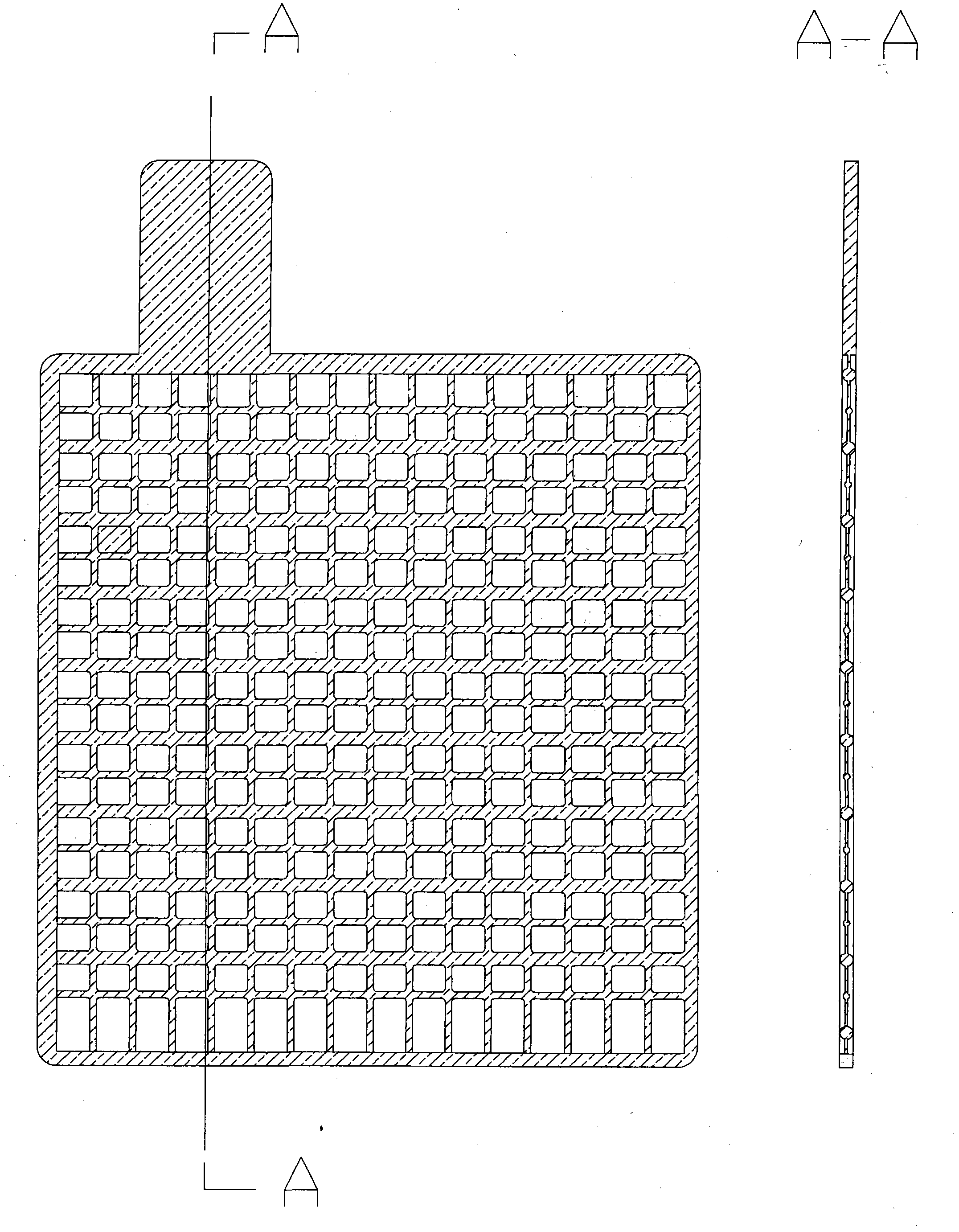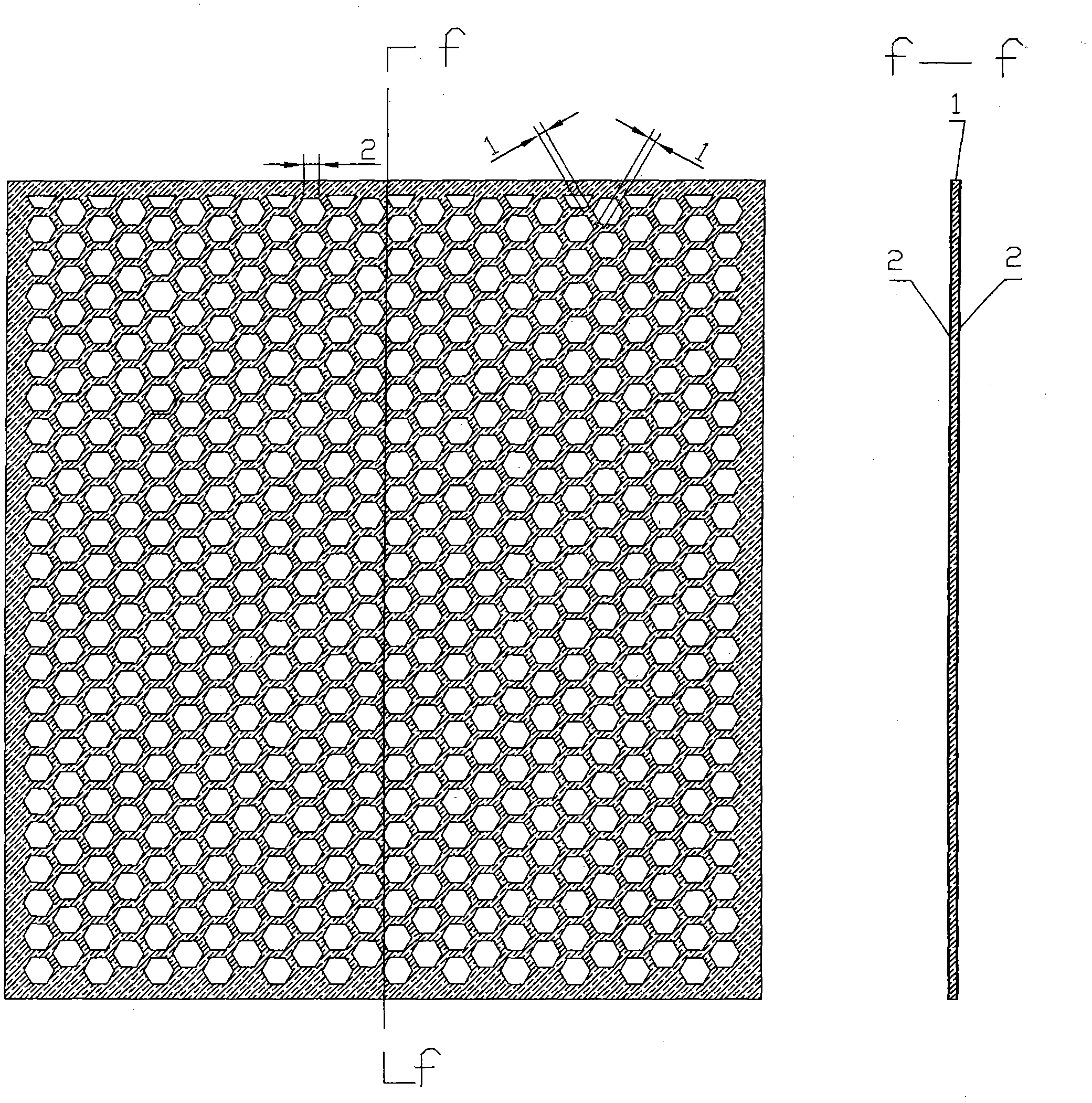Lead-acid accumulator assembled by pole plate with frame-cast, screened and pasted lead-plastic compound grid
A technology of acid battery and composite plate, applied in lead-acid battery, lead-acid battery construction, electrode carrier/current collector, etc., can solve the problems of loss of use function of battery, oxidation of positive grid, short life of lead-acid battery, etc.
- Summary
- Abstract
- Description
- Claims
- Application Information
AI Technical Summary
Problems solved by technology
Method used
Image
Examples
Embodiment Construction
[0010] First of all, we use 500mm wide and 1mm thick polytetrafluoroethylene rolled sheet, 500mm wide and 0.10-0.15mm thick rolled lead foil coil, and carry out single-sided glue coating on the laminating machine to make single-sided lead plastic. Composite sheet. Turn it over and use a rolled lead foil coil with a width of 500mm and a thickness of 0.10-0.15mm on the other side of the thin plate for glue coating and compounding to make a three-layer composite board. Then cut into slices according to certain specifications. Install the designed die on the punching machine to punch out the shaped lead-plastic composite grid. As shown in Figure (2): the front of the grid is a geometric surface after washing out n regular hexagonal parts with a side length of 2mm. (1) is a polytetrafluoroethylene material, and its two sides (2) are calendered lead foils firmly compounded on it after gluing. Judging from the materials used, we have obtained a lead-plastic composite grid that is ...
PUM
| Property | Measurement | Unit |
|---|---|---|
| Thickness | aaaaa | aaaaa |
| Thickness | aaaaa | aaaaa |
Abstract
Description
Claims
Application Information
 Login to View More
Login to View More - R&D
- Intellectual Property
- Life Sciences
- Materials
- Tech Scout
- Unparalleled Data Quality
- Higher Quality Content
- 60% Fewer Hallucinations
Browse by: Latest US Patents, China's latest patents, Technical Efficacy Thesaurus, Application Domain, Technology Topic, Popular Technical Reports.
© 2025 PatSnap. All rights reserved.Legal|Privacy policy|Modern Slavery Act Transparency Statement|Sitemap|About US| Contact US: help@patsnap.com



